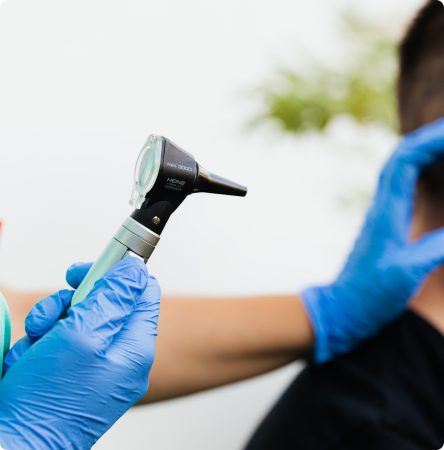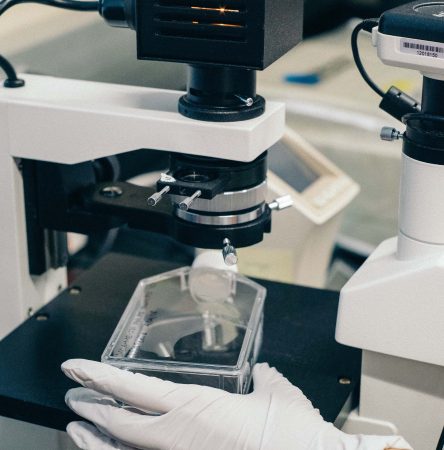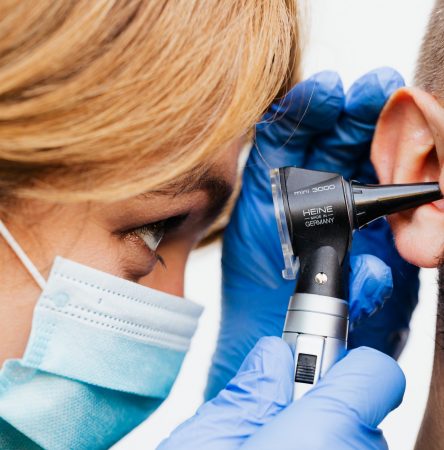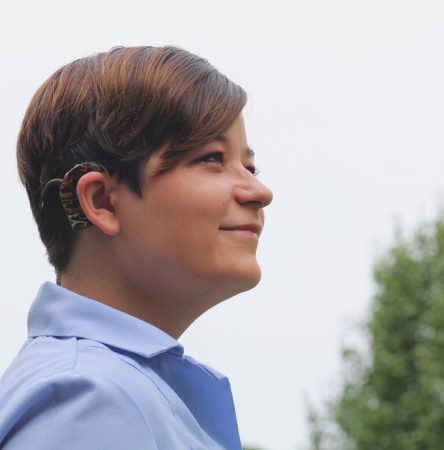Our approach around three pillars
Through these 3 pillars, we are developing a portfolio of potential therapeutic solutions addressing unmet medical need in inner ear disorders.
Aim
One of our objectives is to restore hearing by developing innovative gene therapies for genetic forms of hearing loss that have been hitherto untreatable. Sensorion is developing two products: OTOF-GT (SENS-501) targeting otoferlin deficiency and GJB2-GT targeting GJB2-related hearing loss.
Access Sensorion’s Gene Therapy R&D Day Replay (April 6, 2023)
R&D Day slide deck (powerpoint)



collaboration
In May 2019, Sensorion signed a partnership framework agreement with the Institut Pasteur on gene therapy programs targeting hearing loss. Sensorion is the preferred partner for the Institut Pasteur’s research programs in the field of genetic inner ear diseases, with rights to establish research and development collaborations. In the first two programs from this collaboration, Sensorion and the Institut Pasteur are investigating deafness caused by otoferlin deficiency (SENS-501) and by mutations in the GJB2 gene.
Our approach
Introduction
Sensorion’s OTOF-GT (SENS-501) gene therapy product development program aims to restore hearing in people with otoferlin deficiency, one of the most common forms of congenital deafness. This rare genetic disease is caused by mutations in the OTOF gene, typically leading to severe to profound deafness in both ears.
The otoferlin protein is essential in transmitting sound information at auditory hair cell synapses.

Sensorion is the sole industrial partner in the « AUDINNOVE » consortium together with three clinical and research partners – Necker-Enfants Malades Hospital, the Institut Pasteur, the Fondation pour l’Audition. The objective is the development of a gene therapy for patients suffering from otoferlin deficiency.
The consortium funding (up to €9.7m), will advance the program to the enrolment of the first patient in the clinical study.
Membership of this consortium keeps Sensorion at the forefront of the epidemiology of otoferlin deficiency and emerging gene therapies.
This project notably involves:
-A database compilation with genotypic and phenotypic characterization of children with congenital hearing loss
-A natural history study allowing for clinical evaluation and selection of patients
-A Phase 1 clinical study
This consortium is key to the understanding of the epidemiology and to build awareness of the emerging gene therapies.
This project is financed by the French state, via the National Research Agency through the “Investing for the future” program (ref: ANR-18-RHUS-0007).

Key figures
Notre approche
What is GJB2-related hearing loss?
Sensorion’s GJB2-GT gene therapy product development program aims to address hearing loss in people with mutations in the GJB2 gene, the most common form of childhood deafness. This rare genetic disease in congenital forms typically leads to severe to profound deafness in both ears.
The Connexin 26 protein, encoded by the GJB2 gene, is essential in the formation of gap junctions in the cochlea, which are key for intercellular exchanges of molecules.
We have identified three forms of hearing loss associated with GJB2 gene mutations:

Key figure
Aim
One of our objectives is to treat hearing disorders by developing innovative therapeutic solutions. SENS-401 SSHNL is our lead candidate to treat sudden sensorineural hearing loss.



Causes
Sudden Sensorineural Hearing Loss is due due to dysfunction of the cells of the cochlea and central auditory structures. It is characterized by a sudden hearing loss appearing instantly or in less than 72 hours, typically unilateral, and a sound perception reduced 1,000 fold (meaning a hearing sensitivity loss of at least 30 decibels).
The hearing loss can be accompanied by tinnitus and frequent vertigo. Complications experienced can be through difficulties in communicating, social isolation and cognitive decline.
Key figures

Prevention
One of our objectives is to prevent hearing loss in different indications such as cisplatin induced ototoxicity or hearing loss due to cochlear implantation. We launched two programs with our SENS-401 compound: SENS-401 CIO and SENS-401 Cochlear, addressing those two indications.



Treatment
Platinum based agents such as cisplatin (often used as first line option in chemotherapies), carboplatin and oxaliplatin, alone or in combination, are often used to treat a wide variety of cancers. However, cisplatin induced ototoxicity leads to permanent inner ear problems in 50 to 60% of cases, causing:
-Problems in language acquisition and learning for pediatric patients
-Difficulties in communicating, social isolation, cognitive decline
Risk factors include young age as well as individual and cumulative cisplatin doses received.
Causes
Cochlear implants are highly effective in treating severe to profound hearing loss. But preserving acoustic hearing in patients with less severe forms of hearing loss who receive cochlear implants could provide a substantial benefit to this population.
We have initiated a partnership with Cochlear Limited in order to combine cochlear implantation with SENS-401, with the aim of preventing cell death. Cochlear Limited invested €1.6m in Sensorion equity, receiving in exchange a right of first negotiation for a global license to use SENS-401 in combination with its implantable devices.
